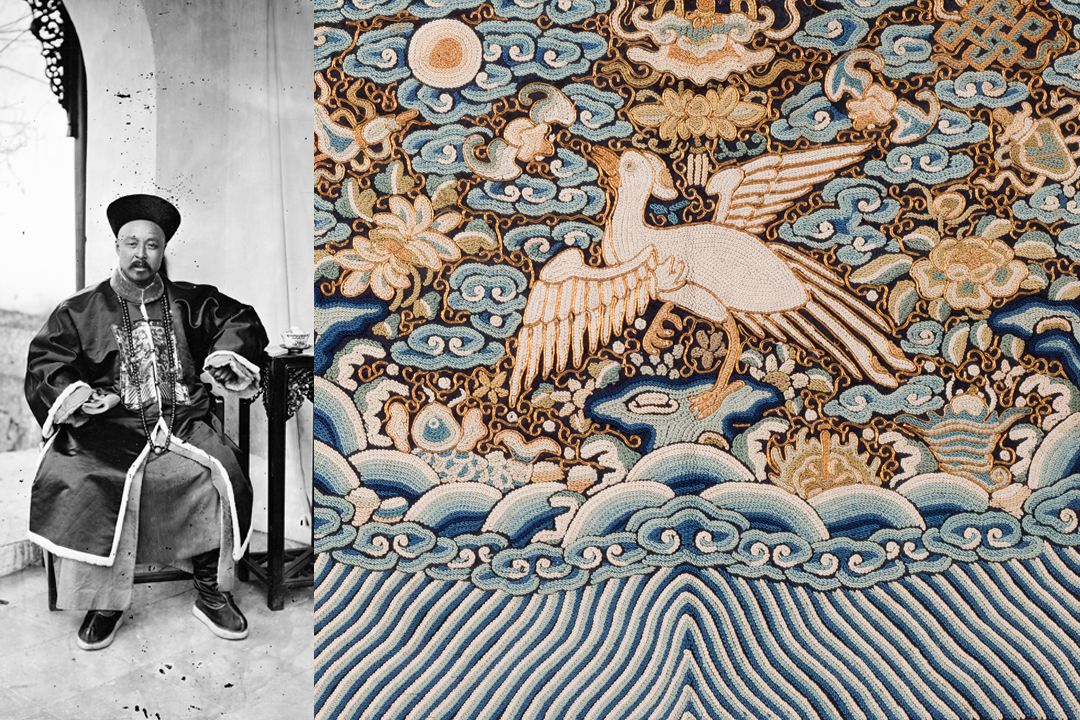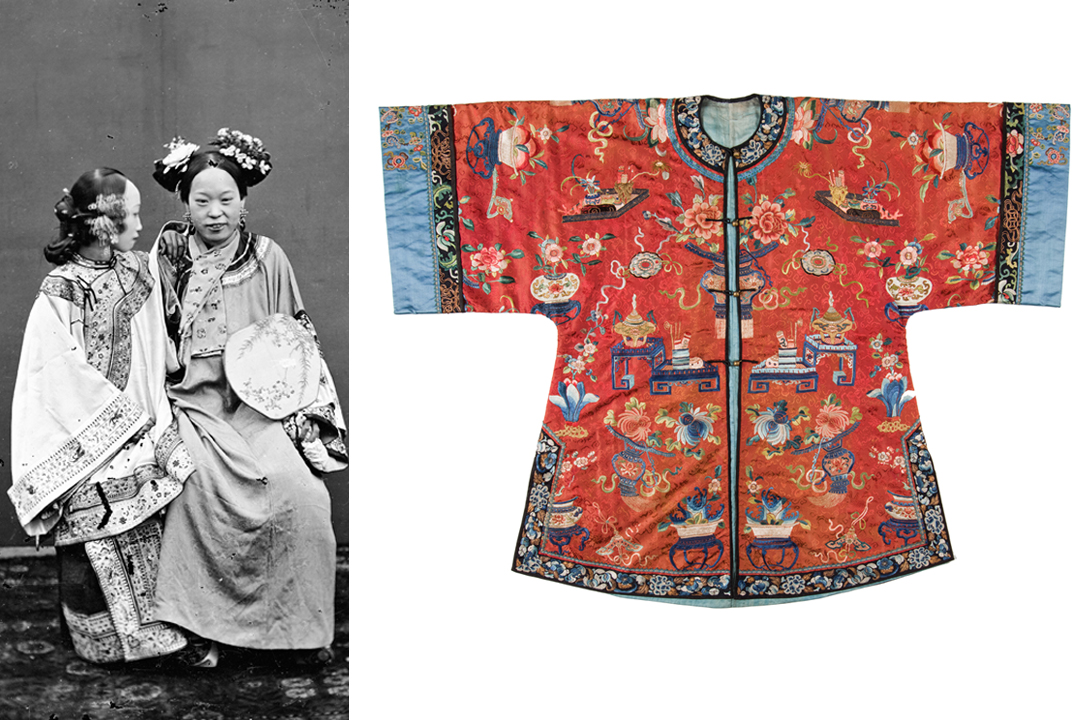Photographers rarely captured images of daily life in 19th-century China. Instead, camera-wielding professionals used their exposure skills to take official portraits or to complete commissioned works.
But Scottish photographer John Thomson pulled the curtain back on Chinese culture by documenting every day scenes in the late 1800s—and his pictures offer an uncommon look into the country’s history, customs and traditions.
Mr. Thomson was a gutsy explorer who traipsed through 5,000 miles of China under the weight of his bulky equipment. He heaved cameras, massive glass negatives and even a makeshift dark room tent around the Far East to create the photos featured in the George Washington University Museum and The Textile Museum’s exhibition “China: Through the Lens of John Thomson (1868–1872).”
The show, which closes Feb. 14, pairs Mr. Thomson’s work with objects in the museum’s textile collection, allowing visitors to see bona fide examples of the garments pictured in the monochromatic, 140-year-old images.
“In the photos, you see the faces of the people and the environments they lived in, but they’re black and white. With the textiles, you can observe the beautiful colors and textures. The combination enhances the way we understand the objects and bring Chinese history to life,” said Lee Talbot, curator of Eastern Hemisphere collections.
Before the exhibition closes, Mr. Talbot selected several photographs and textiles to discuss with George Washington Today. He explained how a simple silk badge could speak volumes about wealthy government officials and what secrets certain outfits reveal about Chinese aristocratic women.
Mandarin Officials and Rank Badges

Serving in the Chinese government was extremely prestigious—and extremely difficult, Mr. Talbot said. Wealthy families would spend years preparing their young sons for an arduous government admission exam. The test was so complex that Mr. Talbot roughly estimates a paltry 3 percent of hopeful candidates passed—if that.
Mr. Thomson encountered several successful applicants during his travels to China, including the civilian official pictured above. Mr. Thomson photographed him in Beijing around 1869. The official wears his uniform: a rather ordinary dark jacket bedizened with a much more impressive and colorful rank badge.
“The badge is what told the world, ‘This is who I am. I have achieved this position,’” Mr. Talbot said. “When a government official passed away, his family would likely have preserved the badge to show what their relatives had accomplished.”
Mr. Talbot found similar examples of these coveted rank badges in the museum’s collection. The silk badge above, like the photograph, boasts one of nine embroidered birds that the Chinese government used to signify the ranking of civilian officials. Four-legged animals, meanwhile, denoted military authority. Because fashion evolved frequently in China, Mr. Talbot said the similar styles of both badges tell us they were made around the same time.
Unseen Chinese Women and Ethnic Attire

Upper-class Chinese women lived behind the walls of their family mansions, tucked away from public view—which makes the photographs Mr. Thomson of them took so unique. He gained access to the female relatives of his wealthy Chinese friends and, with their permission, captured otherwise unobserved moments of their daily routines.
In this picture, Mr. Thomson shot two women of different ethnicities who might have lived in the same household. Because of the long dress blanketed across her neck and shoulders, the woman on the right likely came from the Manchu ethnic group. The Manchu people ruled China for a period of time and, by law, they had to wear clothes that physically distinguished them from other members of society, Mr. Talbot explained. The woman on the left wears a two-piece jacket-and-skirt combination typical of the Han tradition. Both subjects don ornate hairstyles and intricate make-up that took nearly two hours to apply every single day.
“Thomson was able to spend quite a bit of time in the women’s quarters, and he was staggered at how much time it took the women to get put together,” Mr. Talbot said.
For the exhibition, Mr. Talbot found a jacket like the one in the photograph that forms the two-piece costume worn by Han women. But Mr. Talbot notes the particular jacket he selected is a little different than most. It includes a pattern known as the “Hundred Antiques,” made up of books, brushes and other literary symbols associated with male scholars. Normally, Mr. Talbot said, things like insects or flowers representing fertility adorned women’s apparel. This woman was sending a message.
“Women had a choice of what they would wear, and this woman was obviously making a point that she is erudite,” Mr. Talbot said.
“China: Through the Lens of John Thomson (1868–1872)” closes Feb. 14.


